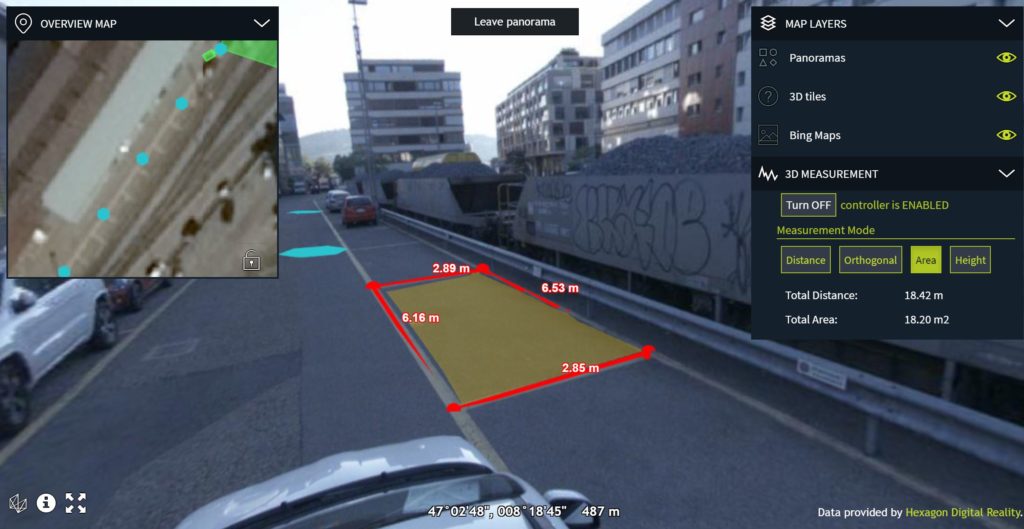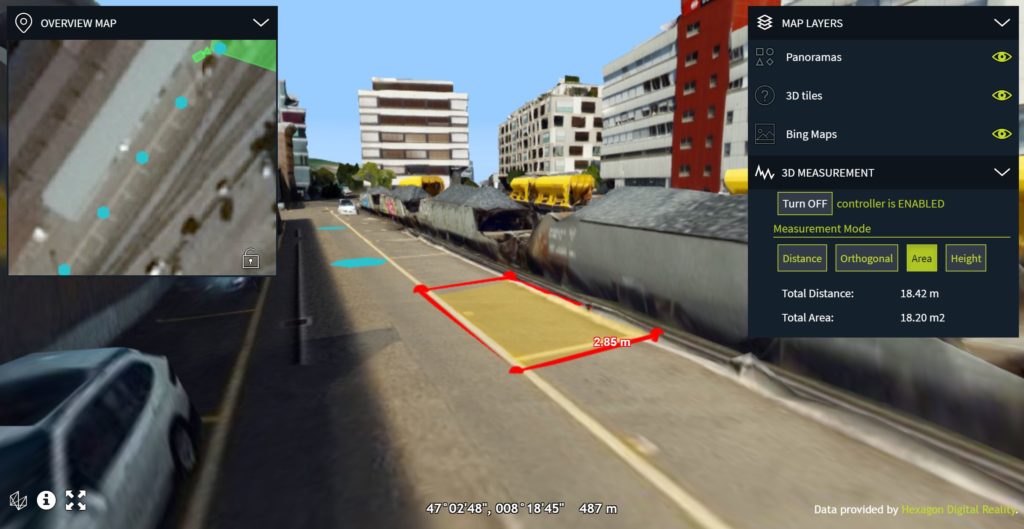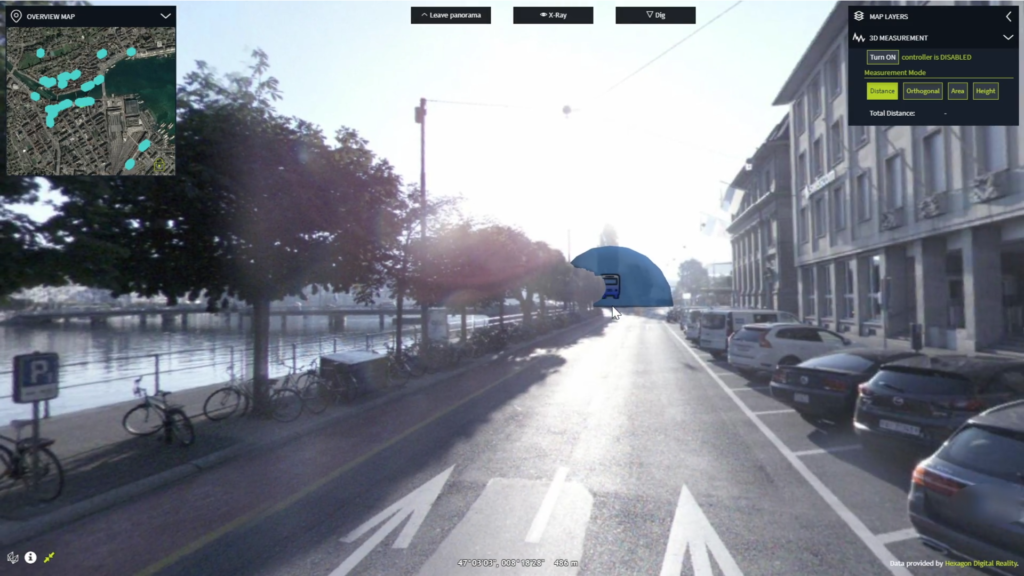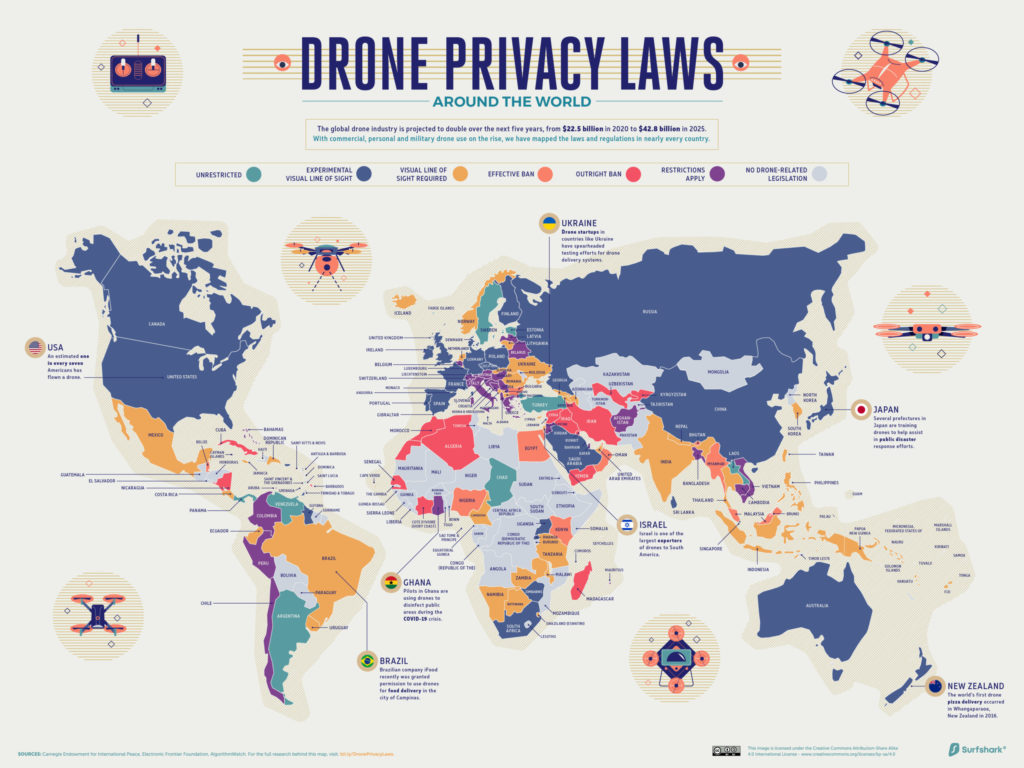
License to fly: Maps explain drone operation rules around the world
With COVID-19 making contactless technology solutions a top priority for enterprises across the globe, the use of drones for mapping, surveillance, inspection, asset management, medical deliveries, et al, has grown exponentially. And policymakers are struggling to keep up with the rapid advances in drone technologies.
Today, at least 143 nations have enacted some form of drone-related laws. These regulations range from outright bans of the technology to relatively unrestricted flight, but most legislations focus on how the drone is being operated – such as within the visual line of sight or beyond it.
VPN company Surfshark took a deep dive into drone operation laws in over 200 countries and found that drone regulations in each country generally fell into one of the following seven categories:
- Outright ban
- Effective ban
- Restrictions apply (such as drone registration or licensing, additional observers required, no commercial usage, etc.)
- Visual line of sight required
- Experimental visual line of sight (where BVLOS flying is allowed)
- Unrestricted (when flying away from private property and airports, under 500 ft/150metres height and with drones weighing less than 250g)
- No drone-related legislation
The maps below show how drones are being regulated around the world as of October 2020. And don’t get thrown off by the phrase ‘privacy laws’ since Surfshark has likely used the term to integrate the research more closely with its own industry domain.
Want to see the data in a country-wise tabular format instead of maps? Scroll to the bottom of the story.
Drone operation laws around the world
Interestingly, there is at least one country on every continent that allows BVLOS operations.

Drone operation laws in North America
In North America, countries with experimental BVLOS drone legislation include Canada, the United States, the Cayman Islands, Antigua and Barbuda, and other small Caribbean nations. This trend is likely related to the presence of tech giants like Amazon, Walmart, and DHL, which are researching ways to incorporate drones into their last-mile delivery infrastructure.
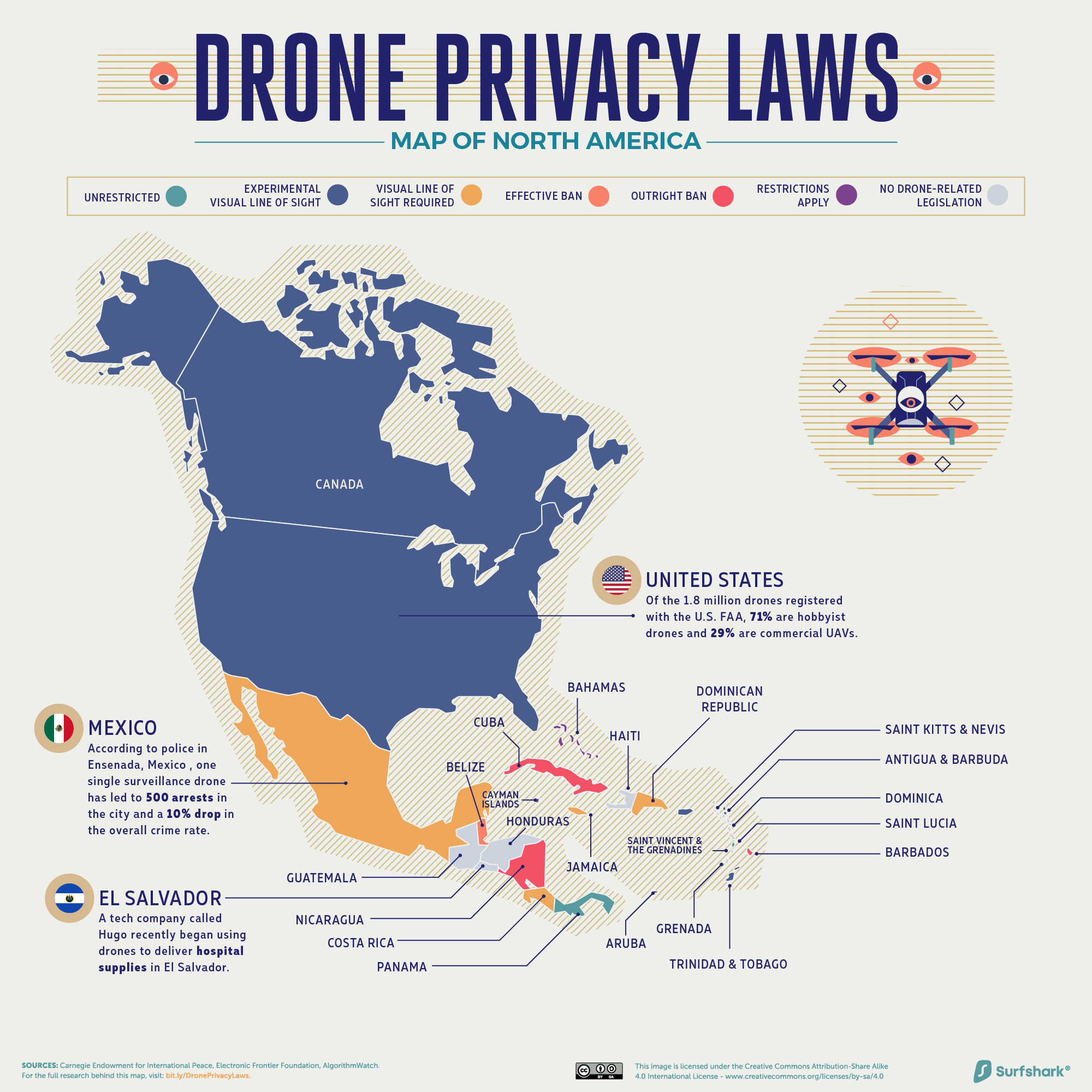
Drone operation laws in Europe
Europe has some of the most liberal drone regulations of any continent. 27 percent of the countries here fall into the ‘unrestricted’ category, more than the 18 percent global average and the most of any continent. But that’s not to say that the operational guidelines are not adequate.
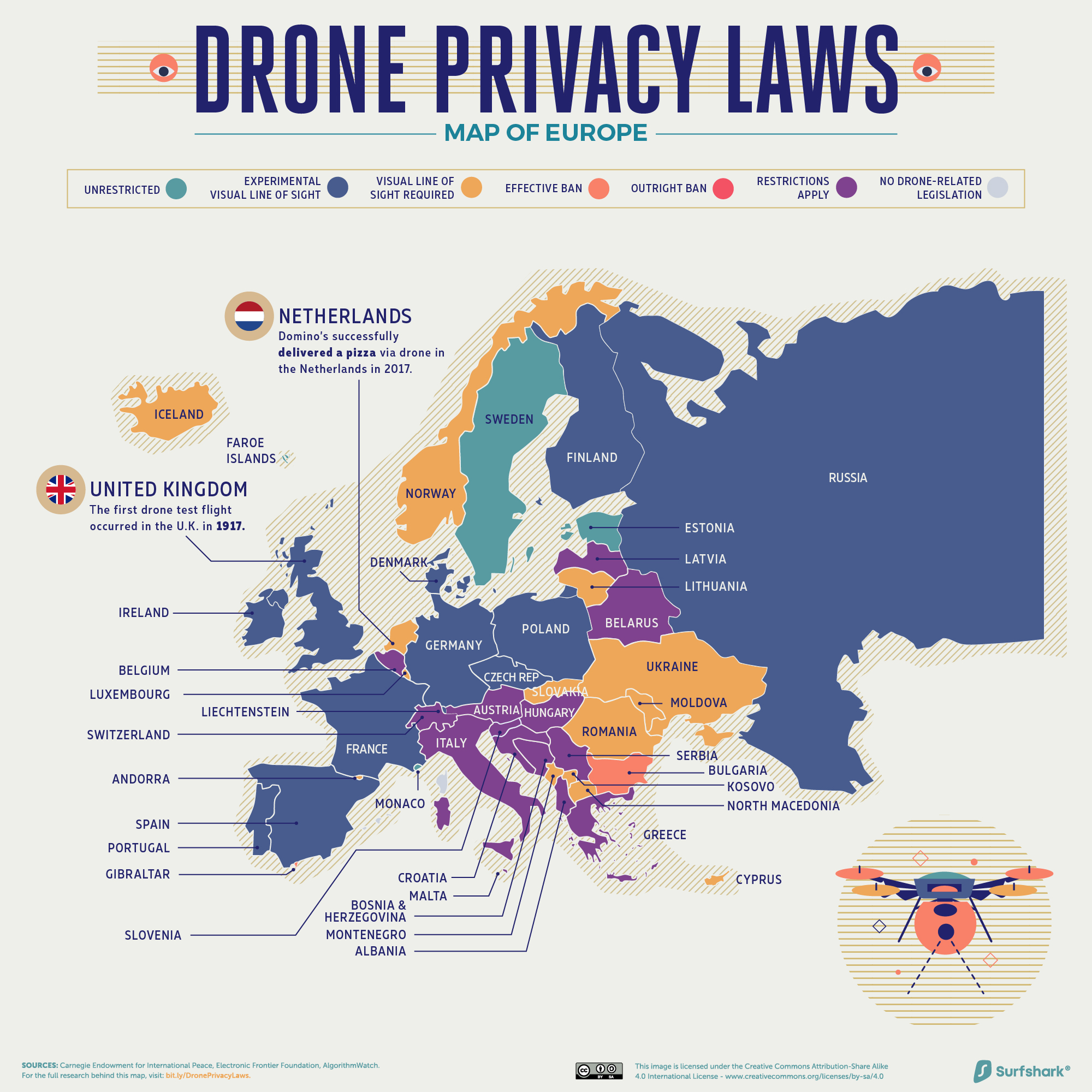
Drone operation laws in South America
Here, only one country, Guyana, has provisions that allow for BVLOS flights – the fewest of any continent. Other countries in South America have specific drone rules geared toward safety and environmental conservation. In Peru, for example, drone flights cannot last longer than an hour. In Ecuador, drones are completely banned on the Galapagos Islands save for approved scientific usage.

Drone operation laws in the Middle East and Central Asia
In this part of the world, a number of countries have effectively banned drones. In Bhutan, for example, only the government can operate drones. Overall, 15 percent of countries in Asia have effective bans on drones, far more than the 8 percent global average and the largest share of any continent.

Drone operation laws in East Asia and Oceania
56 percent of countries in Oceania have no drone-related legislation, the largest share of any continent. Of the countries that do have drone-related legislation, a majority allow drones as long as pilots stay within the visual line of sight of the drone. No countries have outright bans or effective bans of drones.

Drone operation laws in Africa
More than half of all countries in Africa have no drone-related legislation. And of the countries that do, 21 percent have outrightly banned drones – the largest share of any continent. In another 13 percent, drones are technically legal, but obtaining permission to fly from the authorities is extremely difficult. At the same time, there are several examples of innovation on the continent. In Ghana and Rwanda, for example, drones are allowed to fly beyond the line of sight to deliver medical supplies to remote villages.
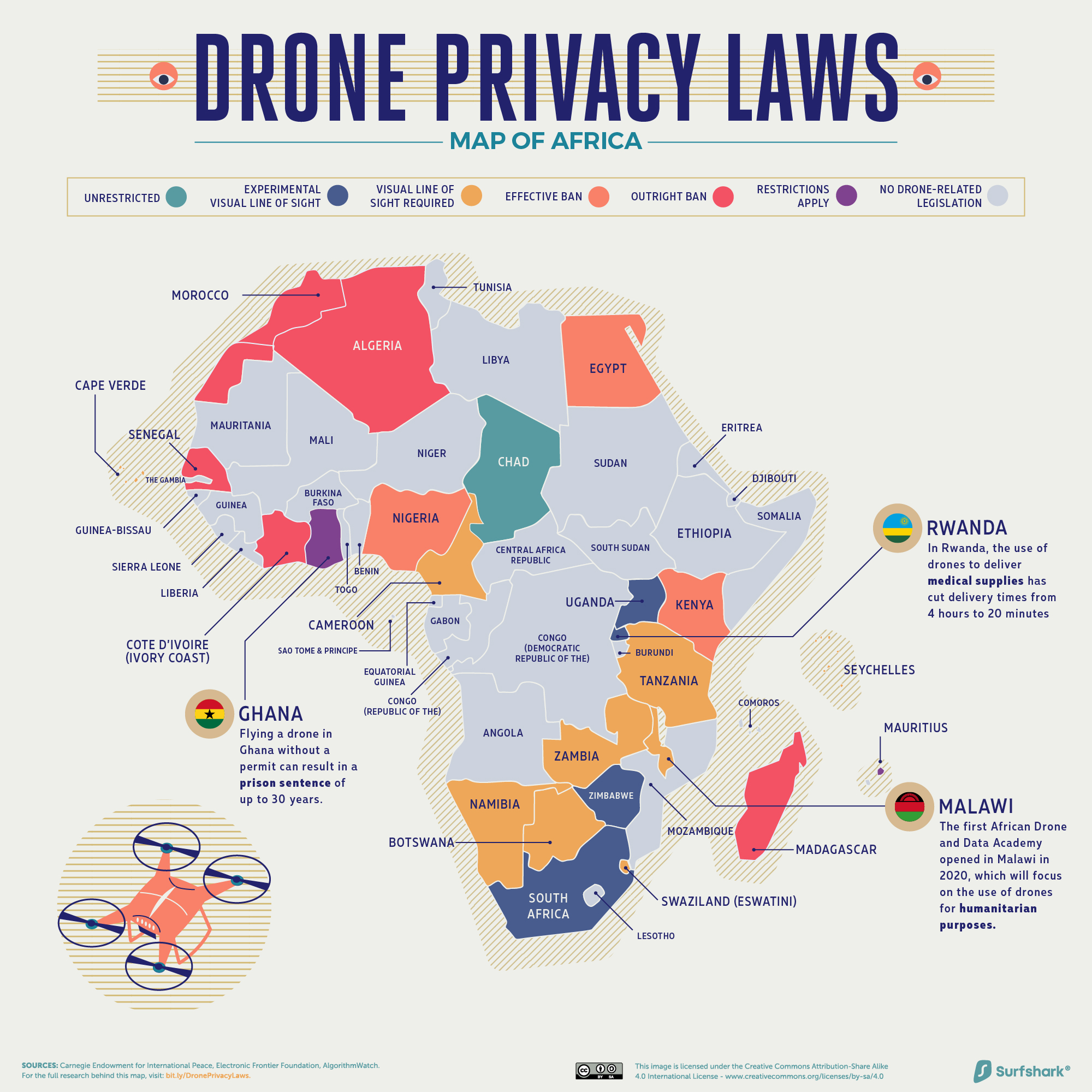
[The above maps were updated on Dec 1, 2020, to add the ‘restrictions apply’ category for better distinction]
Drone operation laws around the world: Country-wise data




